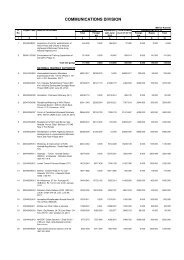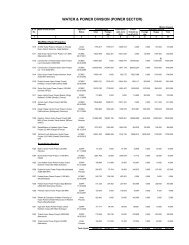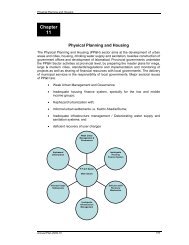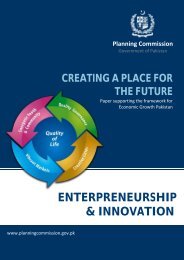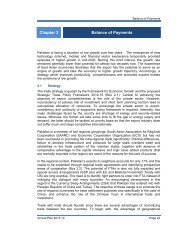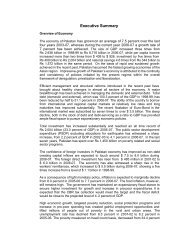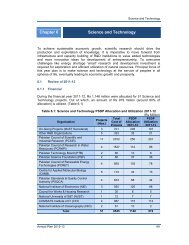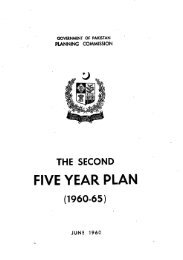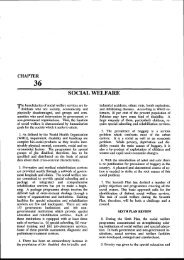Framework for Economic Growth, Pakistan - Planning Commission
Framework for Economic Growth, Pakistan - Planning Commission
Framework for Economic Growth, Pakistan - Planning Commission
You also want an ePaper? Increase the reach of your titles
YUMPU automatically turns print PDFs into web optimized ePapers that Google loves.
International conference on “<strong>Framework</strong> <strong>for</strong> <strong>Economic</strong> <strong>Growth</strong>, <strong>Pakistan</strong>”DiscussionDiscussant: Tahir ShamshadMember <strong>Planning</strong>, Capital Development Authority, IslamabadIslamabad is considered to be one of the bestdeveloped cities in <strong>Pakistan</strong> but, because ofslums coming up and in<strong>for</strong>mal developmenttaken place around in recent past; it is notthat Islamabad which was dreamed at thetime of planning. Instead of going into thetheories about cities I would like to gostraight to what we have planned <strong>for</strong>improving Islamabad in future.Islamabad was planned in 1960 and at thattime there was very little concept of publicparticipation particularly in the decisionmaking and infrastructure development.CDA Ordinance 1960 didn’t includesufficient provisions <strong>for</strong> public participationand investment in infrastructure. We haveidentified basic requirements now that whatwe need in today’s scenario to ensure thatthe city is at par with other imaginative andcreative cities. Recently we have preparedan amendment of the ordinance to bring thecity at fast track again.In master plan of the Islamabad there weremany green and distinct areas planned <strong>for</strong>the city to cater <strong>for</strong> the food needs and otherbasic requirements of the city. With shortageof space and rapid growth in population wehave come up with a new plan <strong>for</strong>Islamabad. In new plan Islamabad has beendivided into five zones, with each zonehaving provisions <strong>for</strong> basic facilities. Veryrecently we have once again studied theissue of slum and in<strong>for</strong>mal development inthe city. In Zone No. 4 we have opened75,000 acres of land <strong>for</strong> public to come up,invest and make all kind of recreationalfacilities in that area.I told earlier that public participation had notbeen there as part of policy in the citydevelopment we are inviting architects,planners along with public to participate inthe city development. Islamabad hasdiversified cultural assets. People fromvarious countries and various places of<strong>Pakistan</strong> come and live here. Culturalplanning is one of the important challenges<strong>for</strong> us to plan and we are taking care of thesediversified resources while planning. Veryrecently we have seen opening of Pak-Chinafriendship centre in Islamabad. Art & craftvillage has also been added to the city. Verysoon a cultural complex is being developedin Shakkarparian. A proper thought outcultural planning is being made to ensurethat diversified cultural asset is taken carewhile planning the city.I would take benefit of this audience andrequest this august <strong>for</strong>um to give somesuggestions.***Discussant: Parvez QureshiUrban Planner and Architect, LahoreI am thankful to Deputy Chairman <strong>Planning</strong><strong>Commission</strong> <strong>for</strong> inviting me in theconference. It is heartening to hear Mr.Tahir Shamshad (Member <strong>Planning</strong>, CDA,Islamabad) speaking about urban issues.People have been talking about issuespertaining to development, expansion; issuesrelated to traffic, pollution, environment,51




